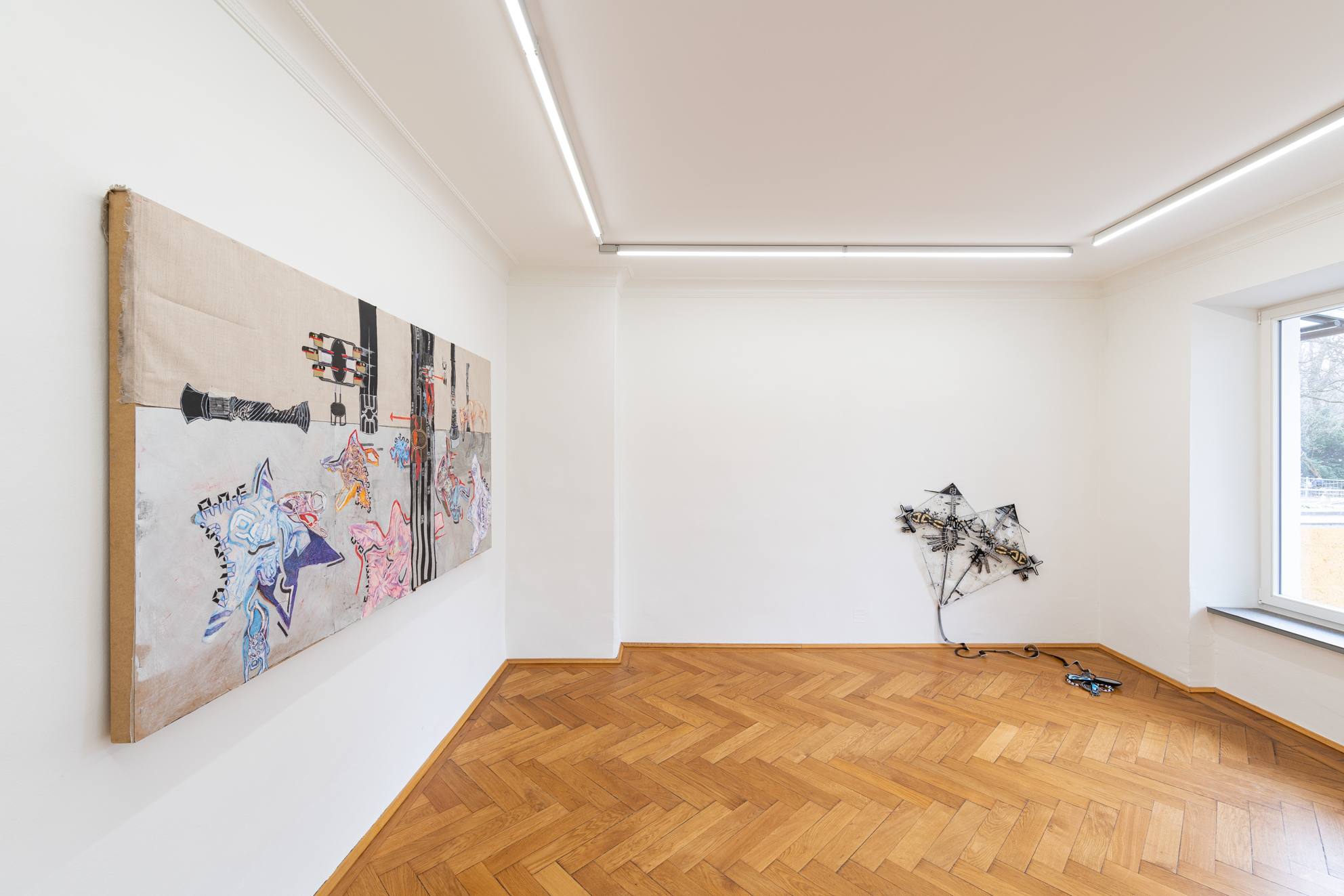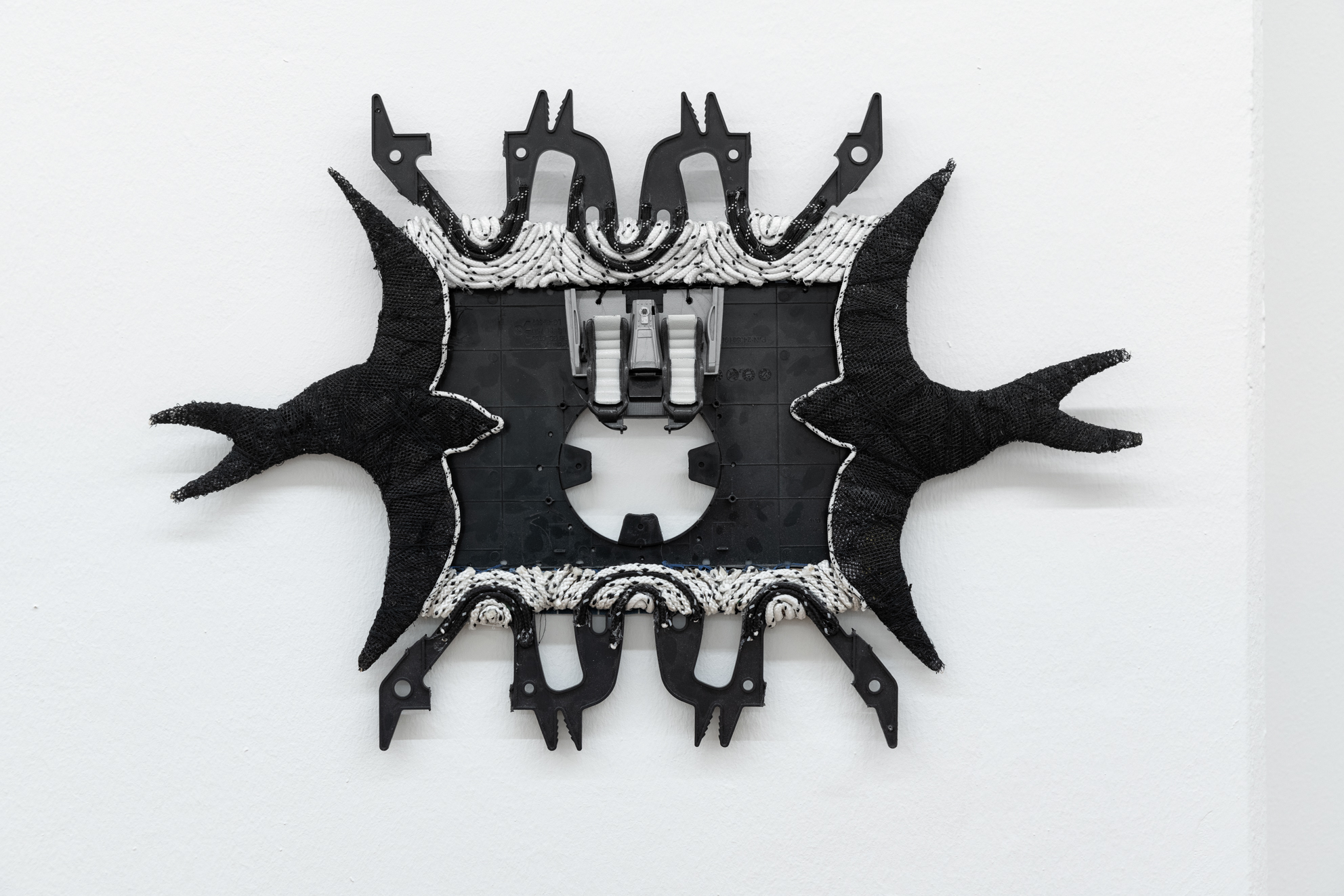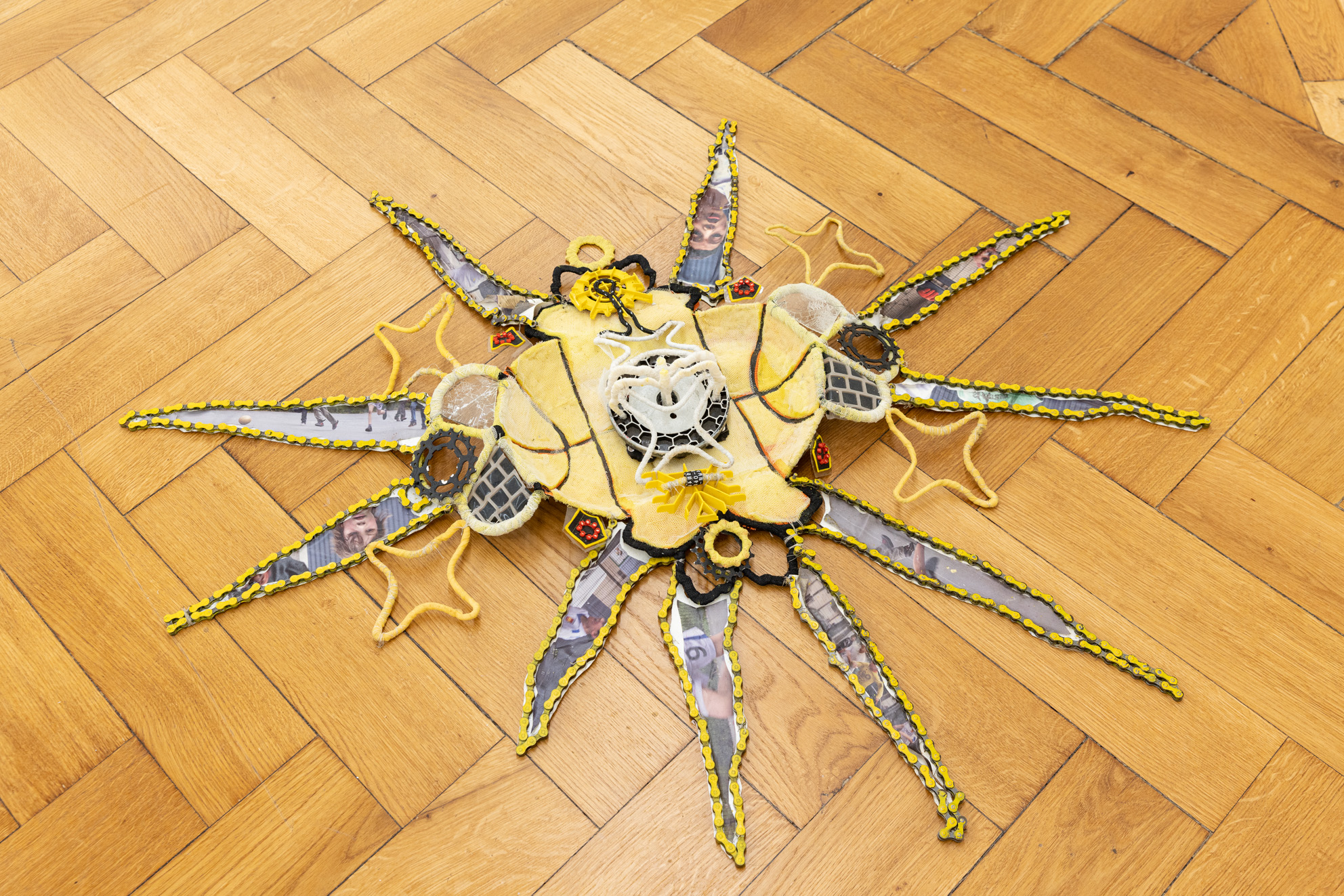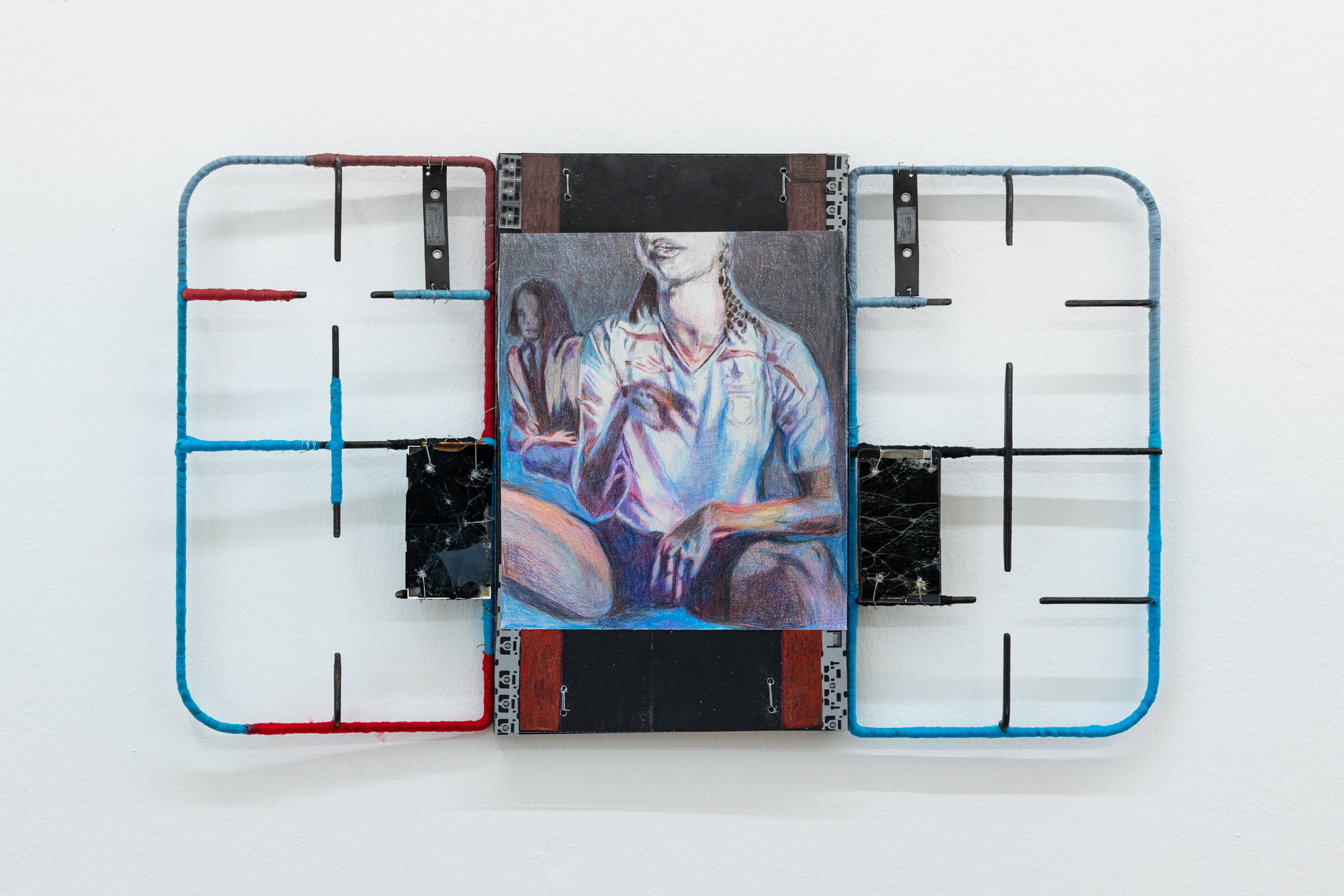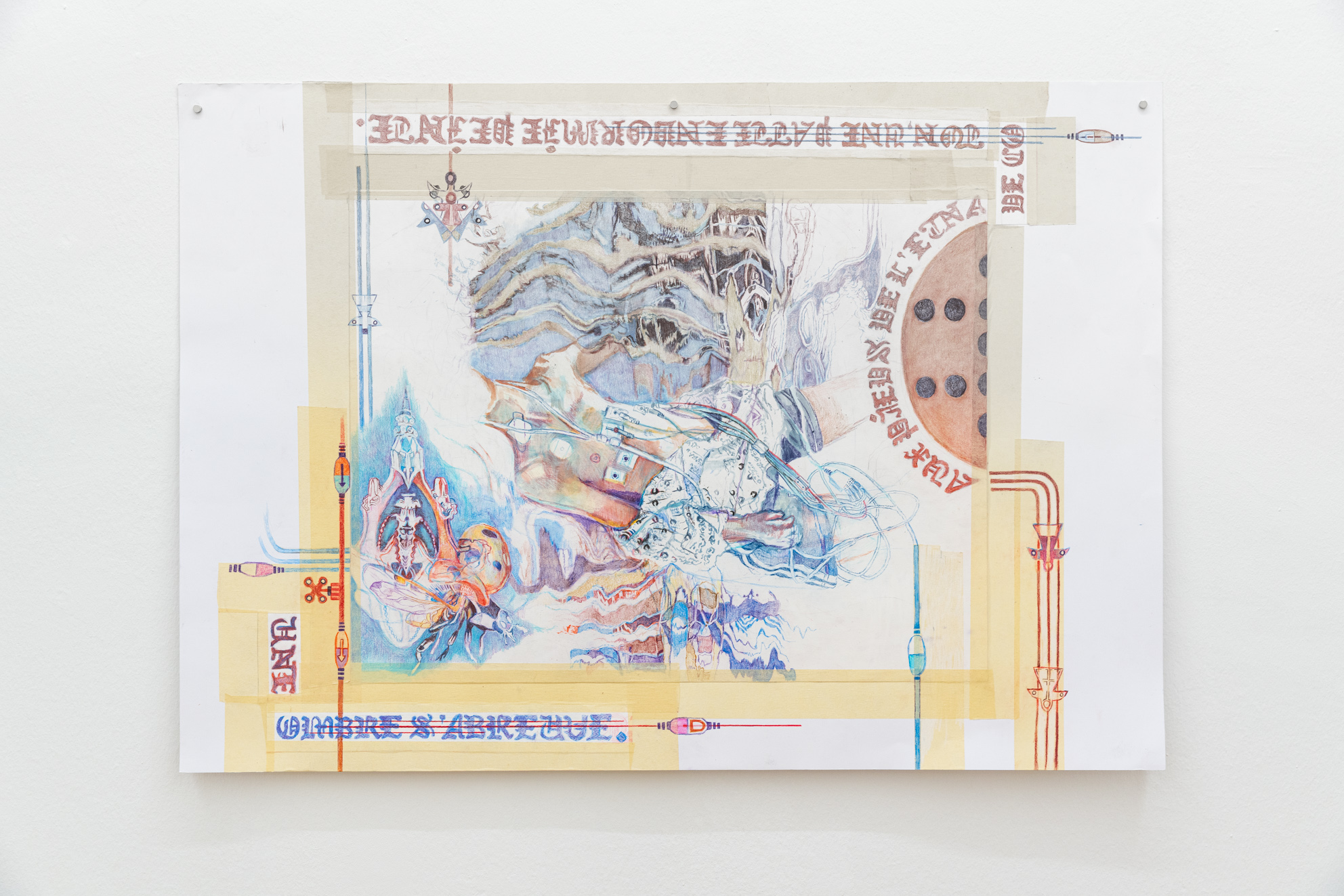
“The Hanging Man
By the roots of my hair some god got hold of me.
I sizzled in his blue volts like a desert prophet.
The nights snapped out of sight like a lizard’s eyelid.
A world of bald white days in a shadeless socket.
A vulturous boredom pinned me in this tree.
If he were I, he would do what I did.”
Ariel, Sylvia Plath (1965)
The amphitheatre is considered an architectural symbol of Roman antiquity and the birthplace of European culture. However, this architectural masterpiece also symbolizes social classification and the playful, bloody display of supposedly subordinate humans and animals. The ellipsoidal assemblage is composed of abstract shapes, colourful textures, and decontextualized mechanical engineering parts to create an enigmatic composition that oscillates between architectural object and textured collage. While the semi-circular auditorium as well as the interior walls are composed of displays and mirror parts of old demolished smartphones, the archways are locked by portals made of bicycle chains. Around the archways, numerical-looking signs, letters, and a conglomeration of forenames can be discovered. These disembodied and identity-less names from online dating platforms such as Tinder and Ok Cupid, refer to human anonymity in the digital world.
Social dimensions form the essence of Anna Solal’s artistic practice. Portraying the human collective – sometimes allegorically, sometimes figuratively and pointedly – are also at the heart of her new work “Arena” (2022). Solal lets us grasp the historical dimension of human organizations by juxtaposing places like the amphitheatre, abandoned battlefields, but also digital social platforms. Interpersonal interactions, but also the relationship of humans to their environment and the related ecological aspect plays a central role. Visualized in earlier works through a preoccupation with plant and animal motifs, the power of ecology finds expression in “Arena” through the visualization of various tree leaves as well as the use of old already used objects. In Solal’s recent work “Clothes” (2022), we see a collage of flower-shaped cut-outs of drawn weapons and animals, as well as numerical letters and a wounded greek column.
The French artist, who first studied drawing and later sculpture at the Arts Visuels de La Cambre Bruxelles, creates mysterious bricolages and an ambivalent interplay of symbols, cut-out drawings, various materialities and mechanical as well as everyday found objects, in whose surfaces a story is already inscribed. The material always dictates form, structure and colour. Each action is a compromise between artistic sensibility and given material. Her works, which can be presented both on the wall and on the floor, are in a hybrid state between drawing and sculpture, between two- and three-dimensionality.
Anna Solal’s practice is underpinned by philosophy and a sensual intellectual aspect, especially evident in the drawings. It contrasts with her use of mechanical industrial objects and highlights Solal’s sense for confrontation. Sylvia Plath’s lyrical poetry about spiritual as well as biological metamorphosis, Georg Trakl’s poems about the withdrawal of God, or the so-called Marian apparition of Our Lady of La Salette from 1846, evoke mystical to dystopian fantasies that deal with the demise of humanity as well as the hope for miracles and salvation.
In the 1966 French film drama Au Hasard Balthazar, director Robert Bresson tells the life story of a donkey named Balthazar and a girl named Marie. Man and animal are portrayed as equal creatures. Balthazar’s suffering amidst exploitation, humiliation and suffering, is reflected in the protagonist. An allegorical passion narrative that is difficult to escape. It deals with the meaning and, as it were, the burden of life, with the sins of humanity and the purity of the innocent.
The end of this artful parable – Balthazar ultimately dies under the blows of man – forms the prelude to a new psychedelic tale, in which this donkey is reborn and wanders as a tear through a destroyed and extinct Europe. After the artist’s book “L’Enfant Chiffre” (2021), this tale is again a collaboration between writer Olivier Prada and Anna Solal, who visually complements his poetic prose with surreal ink drawings and photo collages. Reminiscences of social utopias, the Roman Empire, fascism, and environmental disasters line up with cataclysmic visions of the European collapse. Here, once again, the essence of Anna Solal’s artistic practice becomes clear – the human collective is questioned. At the same time meditative and borrowed from a dull violence, the collapse cohabits with the emergence of new forms of life. Concrete, intimate and imaginatively, her works carry the disturbing enigma of the possible cohabitation between man and nature.






